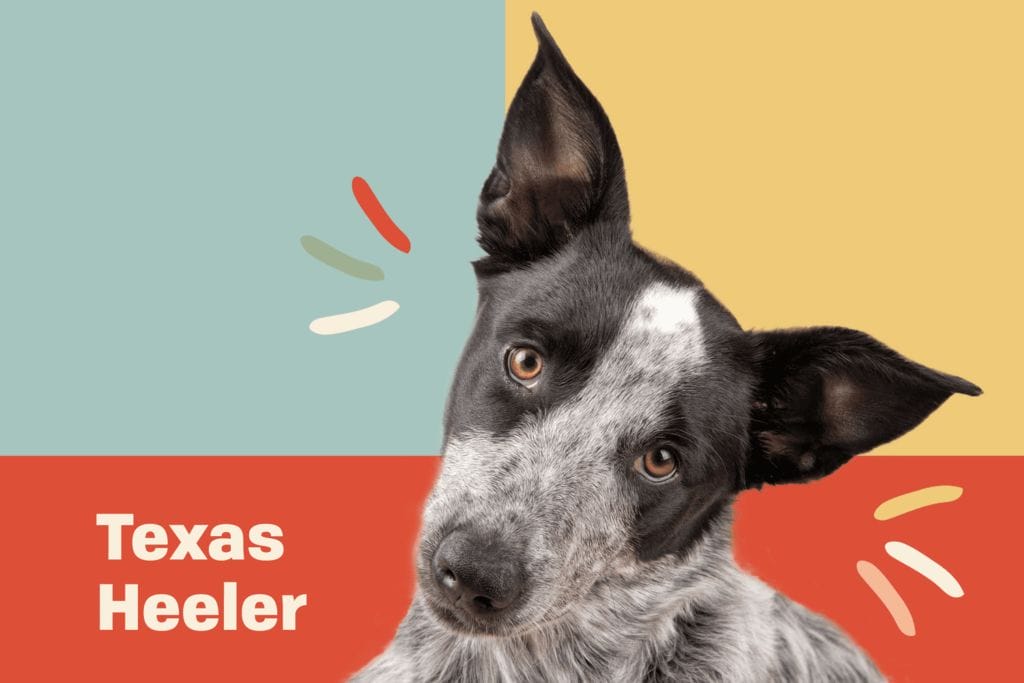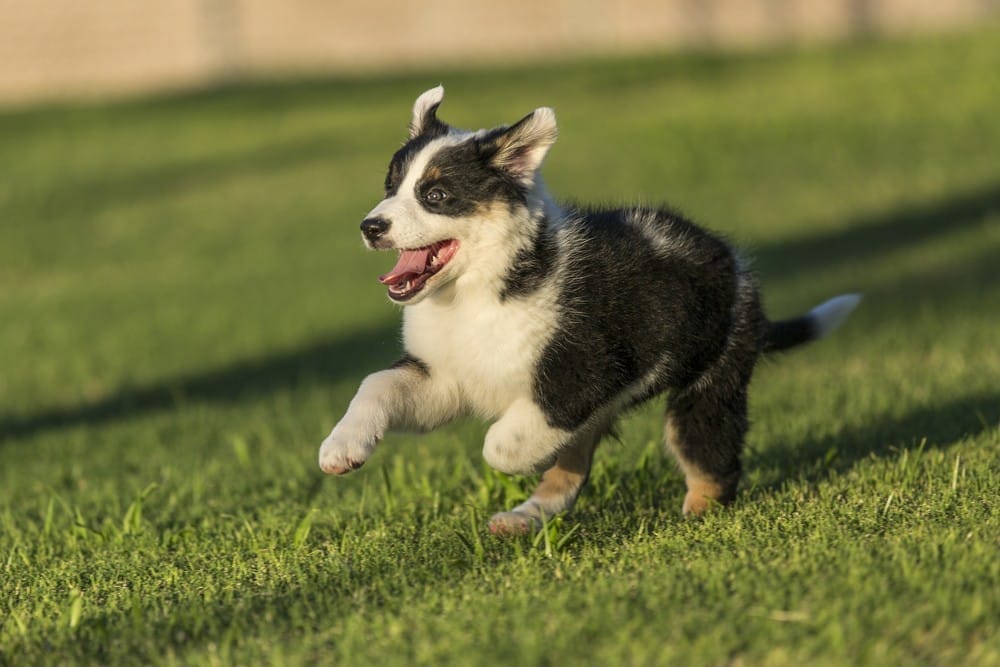The Texas Heeler was first intentionally bred in Texas in the 1970s by ranchers looking to develop a dog with the herding abilities of the Australian Cattle Dog and the intelligence and trainability of the Australian Shepherd. The result was a versatile working dog skilled at herding cattle that also excels at agility, obedience training, and other canine sports and activities. Have boundless energy and thrive when given a job to do. They make loyal pets but require a significant time commitment to meet their physical and mental exercise needs.
Introduction The Texas Heeler Dog Breed

Adaptability: ★★★
Adapts Well To Apartment Living: ★
Good For Novice Owners: ★
Sensitivity Level: ★★★
Tolerates Being Alone: ★
Tolerates Cold Weather: ★★★★
Tolerates Hot Weather: ★★★
All-around friendliness: ★★★
Affectionate With Family: ★★★★
Kid-Friendly: ★★★
Dog Friendly: ★★
Friendly Toward Strangers: ★★
Health And Grooming Needs: ★★
Amount Of Shedding: ★★
Drooling Potential: ★
Easy To Groom: ★★★
General Health: ★★★
Potential For Weight Gain: ★★
Size: ★★
Trainability: ★★★★
Easy To Train: ★★★
Intelligence: ★★★★
Potential For Mouthiness: ★★
Prey Drive: ★★★
Tendency To Bark Or Howl: ★★
Wanderlust Potential: ★★
Exercise needs: ★★★★★
Energy Level: ★★★★★
Intensity: ★★★
Exercise Needs: ★★★★★
Potential For Playfulness: ★★★★★
- Appearance: Blue or red speckled fur; erect, pointed ears; almond-shaped eyes. Strong, athletic build.
- Temperament: Energetic, loyal, intelligent, protective.
- Popularity: Rare, specialty breed
- Lifespan: 12-15 years
- Coat: Short, dense double coat sheds seasonally
- Origins: Cross between the Australian Cattle Dog and Australian Shepherd
How to Care for a Texas Heeler dog breed
Food:
- High protein dog food to fuel their energetic lifestyle
- Food specially formulated for active or working breeds
- Avoid overfeeding
Environment:
- Home with a securely fenced yard for play
- Access to lots of interactive toys and chews
- Climate controlled shelter from extreme heat or cold
Care:
- Minimum of 60-90 minutes intense exercise daily
- Mental stimulation through training, games, jobs
Grooming:
- Weekly brushing to control shedding
- Occasional baths as needed
- Regular nail trims, ear checks, and dental care

Preparing for a Texas Heeler
Advice: Need extensive daily exercise and training. Ensure you can commit to providing this before getting one.
Care Tips:
- Puppy-proof your home by storing valuables and locking trash.
- Create a predictable daily routine of meals, play, training & rest.
- Socialize your puppy once vaccinated to build good behaviors.
Essentials:
- 6 ft secure fence
- Interactive food toys
- Chew-resistant crate, bedding, leashes, etc.
Common Health Issues:
- Hip dysplasia – genetic disorder can cause arthritis
- Eye problems like collie eye anomaly and progressive retinal atrophy
- Allergies
Recommended Vaccines:
- Core vaccines: rabies, parvovirus, distemper, adenovirus
- Non-core: leptospirosis, Lyme disease, influenza
Common Names
When naming your Texas Heeler, opt for 1-2 syllable names that are distinct sounding to aid in training. Some examples:
- Dixie
- Scout
- Jet
- Ace
- Lark
- Rex
Getting a Texas Heeler
Most popular in their home state of Texas and the western half of the U.S. Prices range from $800-$2,000 from breeders. Adoption is possible through breed-specific rescues.
When selecting a pup, check for overall health, no genetic defects, updated vaccines & deworming, and registration paperwork. Ask about parent temperament and whether early socialization occurred.

Recommended Rescues:
- Texas Heeler and Cattle Dog Rescue Alliance
- Lone Star Cattle Dog Rescue
- West Coast Cattle Dog Rescue
Check health status, vaccination records, & behavior with people/dogs. Evaluate if a good activity level match. Sign adoption contract & pay fee of $50-$500.
How to stop Texas Heeler biting?
Redirect puppy biting onto chew toys. Praise when stops. Leave room if continues.
How to socialize a Texas Heeler?
Introduce to new people, dogs, places often starting at 8 weeks old. Reward calm responses.
How to train?
Use positive reinforcement like treats and praise. Have 5-10 minute sessions daily teaching commands like sit, stay, come.
How often should a Texas Heeler see the vet?
Annual exams to check for issues. Senior dogs (7+) visit vet twice yearly.
Are Texas Heelers good family pets?
Yes, they deeply bond with all family members given enough daily activity and training.
Are Texas Heelers good with kids?
Yes, if socialized early. Supervise interactions until child is 5 years old.
Are Texas Heelers good with other animals?
Can be. Early socialization helps. Some same sex aggression occurs.
Are Texas Heelers smart?
Extremely. They are very trainable and need mental stimulation.
What’s the Texas Heeler temperament?
Loyal, energetic, intelligent, protective herding dogs that bond closely to owners.
How many types of Texas Heelers are there?
One. The original cross between an Australian Cattle Dog and Australian Shepherd.
What colors do Texas Heelers come in?
Blue or red speckled coats like their parent breeds. Some have copper and white markings too.
How long do Texas Heelers live?
12-15 years with proper care, nutrition, exercise, and regular vet checkups.
Can Texas Heelers cause allergies?
Yes, through licking and their shedding seasonally. See an allergist for Rx if needed.
Are Texas Heelers aggressive?
They can be protective but are very loyal if properly socialized and trained.
Do Texas Heelers have hair loss issues?
Shedding twice yearly is expected. Excessive hair loss could signal food allergies or skin problems.
By following our website, you can find the perfect dog breeds for you and provide them with the best possible dog care. Remember that owning a dog is a lifelong commitment that requires time, money, and patience. But it is also a rewarding experience that will bring you joy and companionship. All information in Dog care tips.

